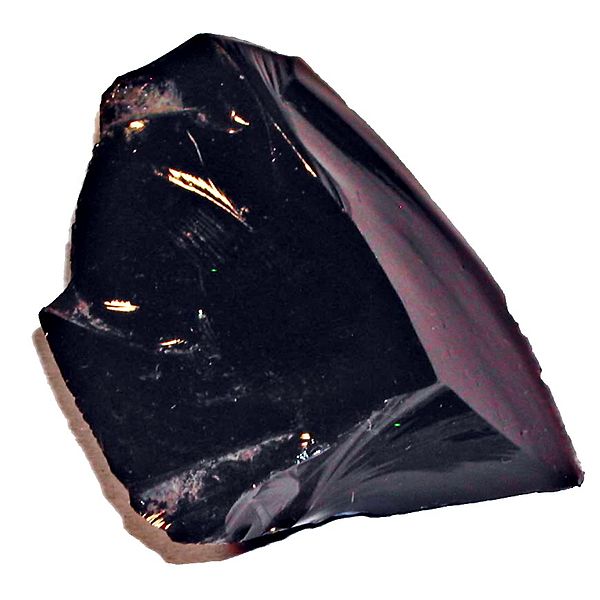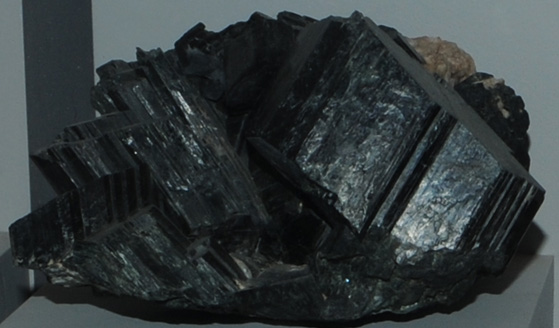THE MUNSELL SOIL CHART is used as a universal standard to eliminate subjectivity and language barriers when describing the color of a soil sample. Three components are considered for each determination: hue, value, and chroma. The following is an explanation of the notation used in the Munsell chart:
>> An example of a Munsell description is 10YR 5/8 (the verbal description is "yellowish brown"). The 10YR portion is the hue, or the dominant wavelength (the amount of red (R) and yellow (Y) in that color). (Imagine you are having paint mixed at the hardware store; the formula "10YR" would mean 10 parts of yellow paint to 1 part red paint, giving a yellow color with red and brown tones.)
The second portion of the Munsell description, 5 in our example, represents the color value. Value is the quantity of light reflected, or the lightness or darkness of the color. Lower numbers (toward the bottom of a page) are used for darker colors, those which are absorbing more light, and higher numbers (as you move to the top of a page) are used for lighter colors, those which reflect more light.
The final portion of the Munsell description is the chroma of the color (8 in our example 10YR 5/8). Chroma refers to the purity of the color, or degree of color saturation. Low chroma numbers are dull colors, and it may be difficult to tell when the color actually changes from one color chip to another. High chroma colors are much easier to tell apart because the colors are stronger (more saturated or intense).
(http://www.soilsurvey.org/tutorial/page7.asp#b)
COMMUNITY GARDENING is a great way to promote sustainability in your area and it is taking place here in Mercer's community. A local garden in which neighbors work together fosters neighborliness, health, and consciousness. With a community garden, locals have easy access to nutritious produce and a dependable food source in unstable, fluctuating times. Something to consider when planting a garden in an urban area is the site's past use history. If structures were located on the garden plot at one time prior to the late 70's, the soil is likely to contain a higher lead concentration than is desired due to the use of lead based paint. Phytoremediation, with sunflowers for example , can be used in an effort to draw out the lead from the proposed garden site. Another solution is to plant your garden in raised beds, thereby eliminating any unknowns in the soil content. In addition, raised beds allow for easier handicap access. Multiple hands tending the garden consistently lessens the need for herbicides, which saves cost and is of course healthier.
Geology Blog
Thursday, March 22, 2012
Monday, February 13, 2012
Igneous Rock Focus: Obsidian
Obsidian is a felsic (from feldspar + silica) rock that results from lava cooling so fast after eruption that the atoms do not have time to form crystal structures before the rock hardens. The dark rock has a very smooth, translucent surface, which is often described as volcanic glass. Due to the glass's lack of orderly crystal structure, it cannot be considered a mineral, but rather a mineraloid. Impurities such as iron and magnesium vary the color from dark green, to brown, to black, and sometimes white spots are observed. The color can also change depending on the direction the rock is cut. Like flint, obsidian is hard and fractures into sharp pieces; therefore, it once served well for cutting and piercing tools (arrows and spears; polished for mirrors) and is still used today for surgical purposes. As an alternative purpose, obsidian is thought by some to protect the sensitive against depression- "the stone of the soft-hearted and gentle people of the world."
Obsidian can be found all over the world near volcanic eruptions. It is common is the western United States (with an entire mountainside of obsidian located in Yellowstone National Park) as well as the state of Virginia.
http://crystal-cure.com/obsidian-gem.html http://en.wikipedia.org/wiki/Obsidian

Obsidian can be found all over the world near volcanic eruptions. It is common is the western United States (with an entire mountainside of obsidian located in Yellowstone National Park) as well as the state of Virginia.
http://crystal-cure.com/obsidian-gem.html http://en.wikipedia.org/wiki/Obsidian

Thursday, February 2, 2012
TYPES OF MINERALS
HORNBLENDE
FELDSPAR


GALENA
QUARTZ
MICA (Muscovite)
CALCITE (rhombus)

HALITE (cube)
KAOLINITE
PYRITE
Monday, January 30, 2012
TYPES OF MAPS
Isarithmic Map- uses lines or colors to define regions of the same value.
Proportional Symbol Map- symbols vary in size place to place on the map in proportion to the quantities found at that location.
Dot Density Map- uses a dot symbol to indicated the presence of a feature at a location. Often used to display population trends or resource location.
 |
| Topographic map of elevation intervals. |
Choropleth Map- uses different colors to define areas with different features, characteristics, or values. If monochromatic, varying lightness in color often indicates qualitative data.
 |
| Differing terms for the same product, nationwide. |
 |
| Number of Walmarts per state. |
Thursday, January 19, 2012
Cascada Los Tercios, El Salvador
The pictures above are waterfalls, Cascadas Los Tercios, located in Suchitoto, El Salvador. They are unique in that it looks as if the rectangular rocks were placed there by hand, but they are actually just a natural outcropping of basalt rocks that serve as a path for the runoff during the rainy season to fall into the lake below. The cascading basalt rocks are a result of past volcanic activity in the area.
These are similar basalt rock columns making up the side of a cliff in Turkey.
Subscribe to:
Posts (Atom)





